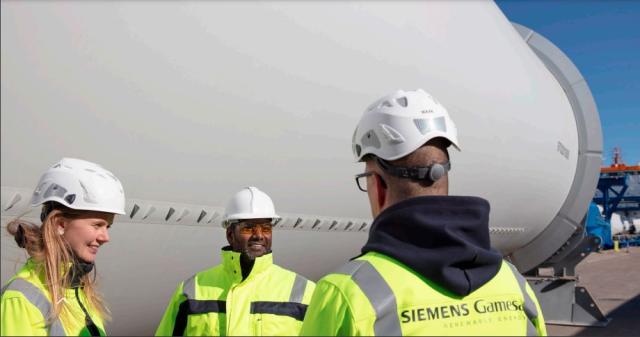Siemens Gamesa said it is looking for more support from the United States administration to strengthen business conditions for the wind industry.
Siemens Gamesa published its white paper “Scaling up the American wind industry.” The paper focuses on the next critical steps that policymakers in the United States must take to ensure that wind turbine manufacturers and developers can leverage recently passed climate legislation, grow the country’s renewable energy industry, and meet climate targets.
DNV is estimating that 5.6 terawatts of onshore wind energy and nearly three terawatts of offshore wind must be generated to achieve a “pathway to net zero” scenario by 2050.
According to a recent Wood Mackenzie report, the U.S. now represents the second-largest market in the world for new renewable energy capacity through 2031.
For wind, Rystad Energy estimates that the U.S. may now deploy 280 gigawatts of new onshore wind capacity (relative to 193 gigawatts projected prior to the IRA), resulting in an additional $160 billion in new investment by 2030.
Already, over $40 billion of capital investment and over 13 gigawatts of new clean energy capacity have been announced since August 2022, according to the latest American Clean Power (ACP) association report.
Siemens Gamesa is asking U.S. policymakers to:
provide expedient clarification on U.S. tax incentive programs that give developers and manufacturers the flexibility to become eligible and promote wind-energy deployment, consistent with statutory requirements and objectives;
acknowledge the impacts of long durations between auction results and projects for offshore wind by including compensation mechanisms for costs that are subject to high inflation;
connect communities across the country to employment opportunities in the wind industry;
provide public support for workforce development programs that meet a common set of standards agreed upon by the wind industry and thereby maximize basic workplace safety and technical training;
maximize clean-energy deployment over the next ten years by streamlining permitting processes for clean-energy projects and transmission infrastructure consistent with environmental law;
incentivize the construction of transmission infrastructure to bring new and pending wind-energy capacity online.

